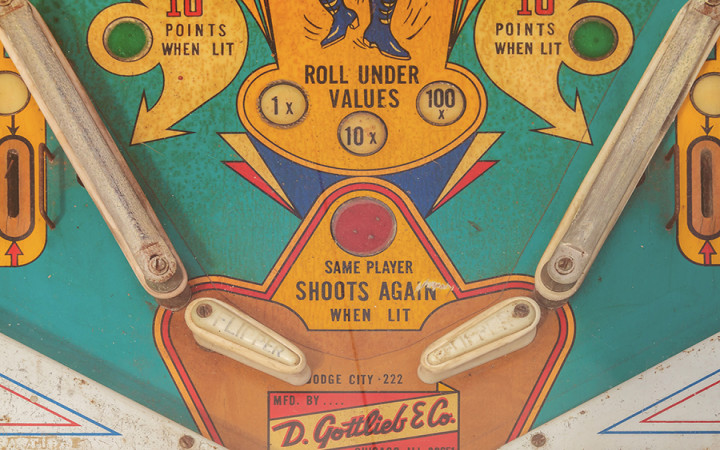Today’s Wonder of the Day was inspired by Grant from KY. Grant Wonders, “How old are video games?” Thanks for WONDERing with us, Grant!
Do you love video games? Many kids couldn’t imagine a world without them! Video games weren’t always something you could play on your smartphone or at home, though. Years ago, you had to find an arcade where you could plunk quarter after quarter into large machines. That’s how people played classic games like Pac Man and Centipede.
Have you ever been to an arcade? If so, you may have played another type of game that requires a considerable amount of skill. No video screens are involved. Still, there are plenty of lights and sounds. There’s also a shiny metal ball, flippers, and bumpers. That’s right! We’re talking about pinball!
Pinball traces its roots to an old table-and-ball game called Bagatelle. British inventor Montegue Redgrave filed for a United States patent in 1871 for an updated version of this game. He called it “Improvements in Bagatelle.”
Redgrave’s game was played on a smaller, inclined playfield with marbles. He also added a spring and plunger. All of these are features of what we know today as pinball.
The first modern pinball machines appeared in the early 1930s. They started as countertop machines without legs. Slowly, they changed and became the larger machines we’re familiar with today.
The first three pinball games were called Bingo, Baffle Ball, and Bally Hoo. Bally Hoo was the first coin-operated pinball machine. The name “pinball” wasn’t used until 1936, though.
Bumpers were added to pinball machines in 1937. Flippers didn’t appear until 1947, and their addition was an important milestone. They changed the nature of the game from one of chance to one of skill.
It may surprise you that pinball machines were once viewed as a danger to society. In fact, from the early 1940s to the mid-1970s, pinball was banned in most major American cities. This included New York City, Los Angeles, and Chicago.
Why was pinball seen as dangerous? In its earliest forms, pinball was more of a game of chance than skill. Many people bet on the games. This made people think pinball encouraged gambling. They also believed pinball caused children to waste time and money. Some legislators were also concerned about possible mafia connections to pinball.
Over time, pinball clearly became a game of skill rather than chance. Legislators eventually ended pinball bans across the country. The game remains popular today. Do you like to play pinball? What other arcade games do you enjoy?
Standards: CCRA.L.3, CCRA.L.6, CCRA.R.1, CCRA.R.2, CCRA.R.4, CCRA.R.10, CCRA.SL.1




